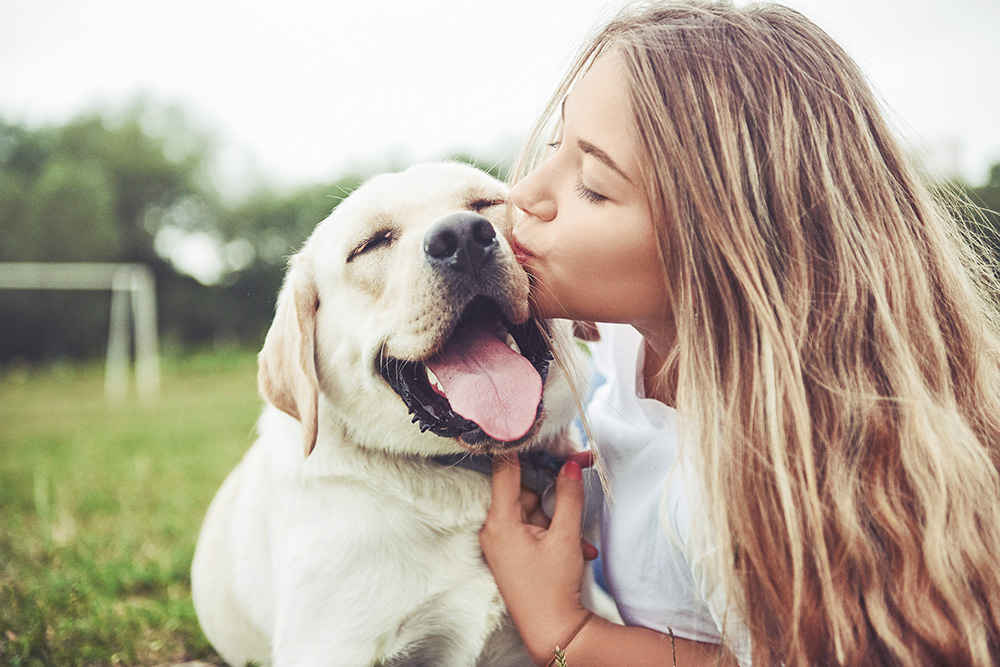From dogs to cats and your feathered friends, it’s normal for pets to experience separation anxiety when their routines change. So if you’re suddenly spending less time at home than you were during the height of the pandemic lockdowns and restrictions, it’s possible your pet may be missing you more than you think.
“If family members have now returned to normal routines, it is important to watch your pet for signs of anxiety or stress,” says vet Dr Teagan Lever. “Behaviours will be exhibited often just before leaving. They may begin to show signs of stress when they see you performing leaving behaviours, like putting on your shoes or picking up the keys.”
KNOW THE SIGNS
If your pet is following you closely around the house, barking, whining, vocalising, drooling or sweating, it could be a sign of anxiety. In some pets, anxiety may show as aggression.
When you leave the house, this can develop into howling, crying, not eating, going to the toilet inside, destroying furniture or other objects, licking their fur more than usual, or trying to escape by chewing or scratching doors and windows.
“It’s important to be mindful that some pets will exhibit some behaviours due to a lack of training,” explains Teagen. “For example, if your dog defecates and urinates inside just as much when you’re home as when you’re gone, they may just need more toilet training and this is not a sign of anxiety.

IS MY PET BORED?
“Boredom is also a common behaviour that will likely arise for dogs and cats left at home alone for long stretches of time during the day while you’re at work or running errands.
“Without anything to occupy them, you may come home to find they’ve got themselves into mischief to stay entertained.”
Signs of boredom can include digging, chewing or other destructive behaviours, along with getting into rubbish bins, barking and whining or following you around when you’re at home. Birds may also display behaviours like screeching, picking at feathers, biting, and repetitive behaviours like pacing and tapping.
If your pet is destroying objects, it could be a sign of boredom, but other anxiety issues could be affecting them. It’s important to look at other behaviour to be sure.
“Consider other signs like if they are howling or crying, or not eating as this indicates anxiety and stress,” Teagan says.

KEEP YOUR FURRY FRIEND CALM
Follow Teagan’s tips to get your pet used to being home by themselves
Avoid making a fuss when leaving or returning home as this reinforces anxiety. Ignore them for a few minutes before your departure and upon return. Wait until they are calm before giving them some attention.
Don’t let your pet develop negative associations to morning rituals. If putting on your shoes is a trigger, try doing this without leaving the house.
Trial short periods of time away from your pet when you are home. Give them a treat or toy, then go to another room and gradually increase the amount of time spent away.
Keep them occupied with a long-lasting treat or interactive toy such as puzzles, mats, dog chew toys, and laser and motion-active cat toys.
Playing music helps to calm and reduce anxiety in pets. Try leaving the radio or TV on with soft rock or classical music.
Keep your dog physically active as a sharp decline in exercise outdoors may lead to excess energy, weight gain and boredom.
Try hiding treats or food in different places around the house or yard to bust boredom and help your pet to exercise. Remember to use different levels of food for cats.
Calming supplements, anxiety wraps and pheromones can also help. For dogs, you can try a ThunderShirt, indoor pheromone diffusers and collars. For cats, try diffusers with a synthetic analogue of the feline “calm” pheromone and anxiety- management supplements.
“If your pet is suffering from severe anxiety or stress, consultation with a positive reinforcement trainer or behavioural veterinarian may
be required so a treatment plan can be developed,” says Teagan.


